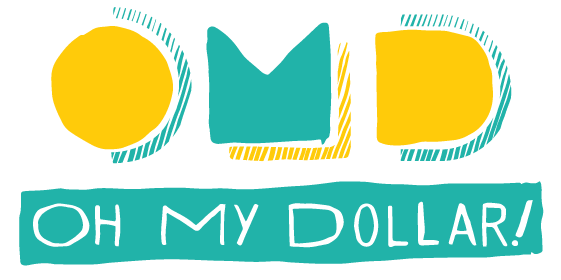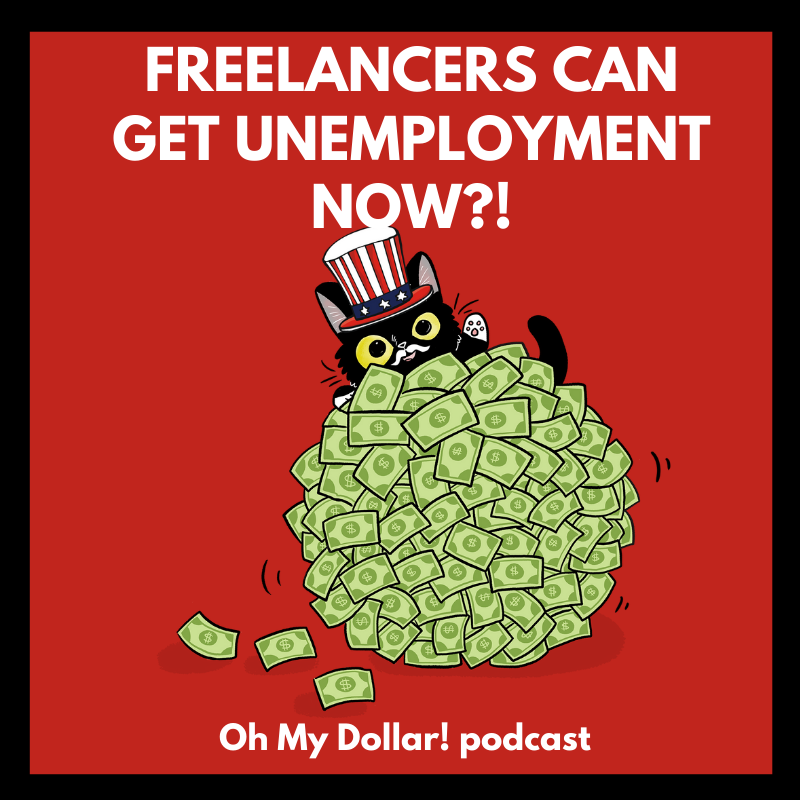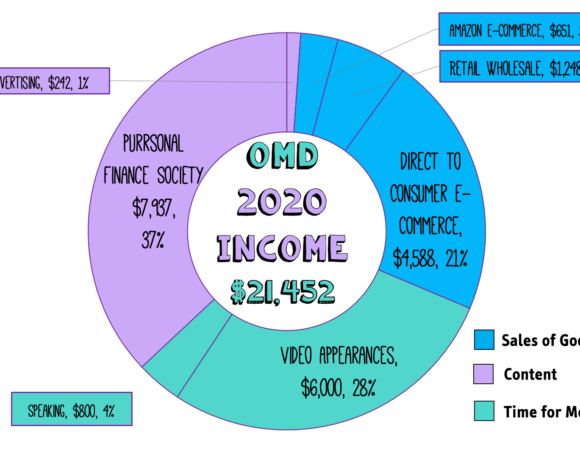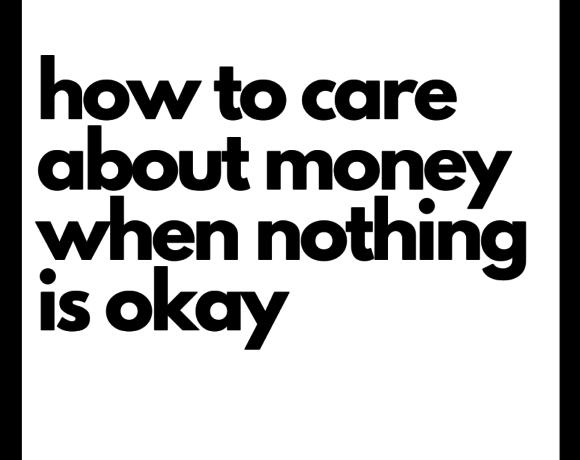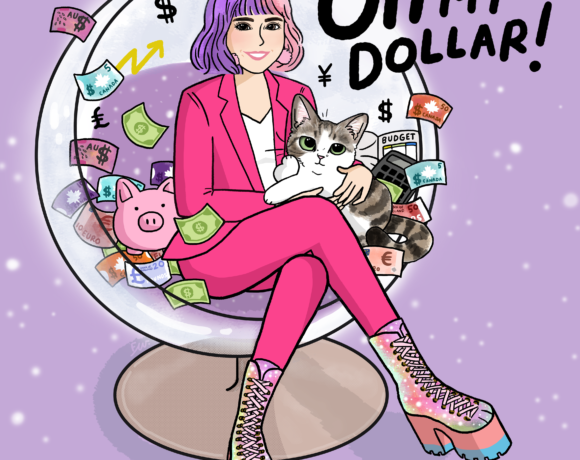Unemployment, there’s a lot of it these days. With 9.6 million Americans filing first-time unemployment claims in the past two weeks, we’re experiencing unprecedented volume. But also – unemployment is covering a lot more people. Freelancers, musicians, gig workers, small business owners, part-time workers, and people who have had their hours reduced due to COVID-19 – all these folks now qualify.
I answer these questions and more:
- Can small business owners really get unemployment payouts?
- What is going on with the extra $600 per week? How long is that for?
- Can musicians and gig workers get unemployment?
- How much do I get and how do I determine my pay
- Why is unemployment paying more?
- What if I can’t work because my kid is out of school or day care?
- What if my family member is sick, or at risk but I’m not – do I have to go to work?
- What if I can’t go to my job because I’m immunosuppressed?
- How do I “look for work” if I’m not supposed to leave my house?
- Should I apply if I have been furloughed or have had a significant reduction of hours?
Send me your questions!
Many have questions about how personal finance is rapidly changing in these unprecedented times – it seems like many of the rules are now suspended. So I’ll be answering whatever your questions are about changes to universal credit, unemployment, student loans, health insurance – and if you ask, I will explain what’s going on with the stock and bond markets.
So, please write in your questions to questions@ohmydollar.com or tweet me @anomalily and I’ll try to answer every single question I get in a few episodes over the next week. I’d also love to just hear just little audio updates about how you’re doing in the world. You can leave a voicemail in the US at (503) 877-4338 or you can email us a voice memo to questions@ohmydollar.com
Oh My Dollar! news
We are having another Talking Dough and Eating Donuts: Social Distancing livestream on this Saturday, April 11th at 2PM Pacific (check what time that is in your time zone). Subscribe on youtube and hit the “bell” icon for notifications to get an alert when we go live.
We’re supporting one another and sharing pet photos on the Oh My Dollar forums, a friendly, nonjudgemental online community about money – come join us, we’re nice!
Email us any financial worries, successes, or health care questions at questions@ohmydollar.com or tweet us at @anomalily or @ohmydollar.
Purrsonal Finance Society Members
We absolutely love our Purrsonal Finance Society Members, the folks that generously support Oh My Dollar with $1 or more a month on Patreon – and have made is so we have free, full transcripts for every show.
Thank you so much to our newest patrons who joined this week – Hank, Clayton, and Amanda!
This episode was underwritten by patrons Tamsen G Association, Galina S, Hank G, and Warrior Queen. To learn more about being part of the Purrsonal Finance Society and get cool perks like cat stickers, you can visit ohmydollar.com/support
Other Episodes You Might Find Interesting
- A recession is coming, how can you be ready?
- Untangling COBRA and Healthcare.gov premiums
- How to get health insurance if you lose your job and those $1,200 checks
Episode Transcript (supported by our Patrons and provided by DSW Transcription)
[00:00:00] Hey, friends, before I get started today, I just want to say thank you. During this time of economic panic and overwhelm, I’m doing everything I can to try to get you the information you need to stay financially secure and answer the questions you have about what’s happening with your money. You should know that I would not be able to do this without support from our Purrsonal Finance Society on Patreon. The folks that support Oh My Dollar!’s reporting, transcripts, and all the server costs to bring you all of the Cat GIFs on the forums – every single dollar counts, and it does make a huge difference. It really does. To learn more, you can visit ohmydollar.com/support.
[00:00:40] [Music]
Hey! Hey, you!
Are you on lockdown too?
Well don’t be sad! It isn’t all bad!
Because I’ve got a song for you!
Let’s all stay
In self Isolation
Let’s all stay
In the same location
Let’s all stay
In self Isolation
Let’s all stay
In the same …
From Self Isolation
[00:01:00] Welcome to Oh My Dollar!, a personal finance show that usually has a dash of glitter. Right now, we’re just trying to keep it together. Dealing with money can be scary and stressful, but here we give practical, friendly advice about money that helps you tackle the financial overwhelm. I’m your host, Lillian Karabaic, and once again, today, I’m [singing] all by myself … I am answering your questions today about unemployment. Once again, this is going to be another very U.S.-specific episode. I apologize, but there is just so much to cover.
[00:01:33] There were a lot of people that had questions about this. As you may know, there have been close to 9.6 million people that have filed for unemployment in the past two weeks. We are at an all-time high of unemployment claims, and the current estimates are that the unemployment rate, which was at the lowest it had been in 10 years, now might be approaching something closer to 13 to 20 percent. But here is one of the silver linings to that …
[00:02:07] I hate to say we have to find silver linings because I don’t think we need to find silver linings, right now. We just need we just need to wash our hands and try to keep it together … But one of the silver linings of that is that, for the first time ever, thanks to the fiscal stimulus package that was passed as part of the CARES Act, more people can apply for unemployment than ever before, so folks had a bunch of different questions about this.
[00:02:33] The basics of what unemployment is, is essentially it is meant to help tide people over when they lose their job – through no fault of their own – until they get a new job. Because of that, it’s set at what is, for a lot of people, very unlivable amounts of money because it is quite often set at 45 to 65 percent of whatever you were making before. If you are in the median-income range, sure, maybe that means some rice and beans, but you can still pay your rent. However, if you were previously making minimum wage, and now you’re making 45 percent of minimum wage, you probably can’t pay your bills.
[00:03:14] The other thing about unemployment is that the friction in the system is kind of meant to encourage you to look for work. They ask for you to report on the activities that you’ve done to look for work every week. It’s a weekly benefit amount. This all sounds great, when the economy’s doing great; when you can go out and do things like, I don’t know, apply for jobs, take interviews, have meetings, not do everything over Zoom in your pajamas. It doesn’t work so well when what we actually need is the economy to slow down. There are going to be businesses that have to be shut down while we have these stay-at-home orders in effect.
[00:03:53] What they did, as part of the fiscal stimulus bill, was they said, “This is a crisis, and we need to make sure people can still pay their bills. We also don’t necessarily want people out there looking for jobs. We don’t want people going to job fairs. We won’t want people knocking on the doors of places looking for jobs.” There are going to be far less positions available than there are people looking for jobs, and that is just quite frank.
[00:04:20] So, this is a couple of things that they did as part of that. A bunch of people that never previously would have qualified for unemployment are now qualified for it. That all sounds great. The big problem is that the unemployment systems are overwhelmed. I had people say that they’d been trying for weeks. There’s a bunch of states where unemployment is only open one day of the week to file, and it’s only open until Tuesday night at 8:00 p.m. in New York. I mean, there are lots of ways in which the system is not built for it.
[00:04:53] First of all, who is going to be covered in this? You’ve probably always heard that freelancers and independent contractors are not eligible for unemployment, and that’s generally true because the way that it works is that employers, people that pay people on payroll, as W-2 employees, pay into the unemployment insurance system, which is usually 2.4 percent – at least in my state; it varies a little bit by state – of whatever they paid in payroll the year previous. That all goes into a fund, and we use it to pay these benefits for people that are out of work. It’s one of those systems that works great as long as not everybody’s applying at the same time.
[00:05:34] That being said, what the federal government did is they said, “Hey, we are going to massively make it so that a lot more people qualify for unemployment, and then we are also going to up the benefit amount.” So, now, for a lot of people, if you were previously making minimum wage, and you got laid off from your job, or your hours and your wages got cut, as a worker, you might actually be making a lot more on unemployment – through July 31 – than you would at your job before. The CARES Act created a special pandemic-insurance benefit that covers people who aren’t usually eligible. This covers a lot of musicians, and music-industry workers. It covers a lot of people in service industry that may not have previously gotten coverage, like gig workers, people that do deliveries, Uber drivers, things like that.
[00:06:26] This is a really big deal. There are a lot of groups that lobbied really hard to get this included. It also covers a lot of other people. If you are a freelancer who lost a percentage of your income because of COVID-19, or if you’re a business owner that lost it because of COVID-19, your income does not have to drop to zero to be eligible for unemployment benefits. If you’ve lost some work as a result of the coronavirus, you’re eligible for partial unemployment. For example, if your musician’s tour is canceled, you might still be earning money from royalties, YouTube ads, merchandise sales that you’re still pushing out through your website, but you would still be able to file for unemployment and that might reduce your weekly amount. However, everybody is getting an extra $600 a week, so that is $2,400 a month that you are going to get on top of whatever the minimum amount is for your state.
[00:07:28] How are these weekly amounts going to be calculated? Well, it’s not entirely clear yet, but states are waiting for federal guidance from the Department of Labor, and they can’t really implement their laws until they’ve got this guidance. So, all of the states are in a completely different state, where they have this. No pun intended if that was even a pun. You do have to- whatever your state of residence is, you need to go on to your State Department of Labor unemployment website and see what they have because they are all doing wildly different calculations for freelancers and small business owners. It just isn’t that simple.
[00:08:03] For a lot of freelancers, it might actually be the case that rather than trying to calculate freelancer income, or gig economy income, the states are just going to offer 50 percent of the state average weekly unemployment disbursement and then add $600 a week on top of that from the federal extra subsidy that comes in play until July 31. It really depends on the state because this is up to how they do each of them. But that extra $600 a week is a guaranteed part of the federal benefit. If you qualify for even a dollar of unemployment benefit per week in your state, you will also get that $600 a week as part of unemployment.
[00:08:41] This is true for someone whose hours, and wages have been reduced as a result of the COVID-19 panic. So, let’s say that you were furloughed because of COVID-19, and you lost 20 percent of your income; you would still be able to file for unemployment and, well, you would probably receive the minimum amount, which in a lot of states is around $100 a week. You would also get that extra $600 a week, which, if you are a median-earning -income person, that puts your regular wages would probably be more than you were making previously.
[00:09:15] There are also a bunch of other people who might get covered. Previously, a lot of states did not cover part-time workers whose hours got cut, or part-time workers, at all, who lost their jobs. Part-time workers are now eligible for benefits, but the benefit amount and how long benefits will last depends on the state. That being said, everyone is going to qualify for at least 13 weeks additional, over what they had before, because usually unemployment benefits last 26 weeks in most states, which is six months. However, this bill extended all federal benefits out by 13 weeks. That means that everybody is going to get a base of at least 13 weeks, even as states are trying to figure out what they’re doing for part-time workers; whatever.
[00:09:58] It also used to be that your base wages are based on the previous quarters, and it’s a little complicated because it’s not the most recent quarter – I’m recording this in April. For most states, April, May, June – that quarter – if you apply in that quarter, your benefits will were based on the previous calendar year, so January through December of the previous calendar year. They will essentially take the average of what you earned per week during those quarters, and a percentage of that will determine your base benefit amount.
[00:10:33] It’s sounds really complicated, but most states do have an unemployment calculator, where you can try to figure it out. That being said, if you’re someone that works a lot of jobs, if you have a lot of W-2s, 1099s, if you are a small business owner, it is best to have your paperwork in order before you file, or even before you go look at that calculator, because otherwise you’re just going to make yourself confused. If you did apply in the early part of this year – January, February, and March – for most states, that means that, actually, your quarters would have included the last quarter of 2018. Essentially, there’s a one-quarter delay of the base quarters that they use to qualify.
[00:11:14] Usually, you have to have at least 500 hours of work during those quarters to qualify for unemployment. But this is another thing that was changed by this. So, say you are a recent graduate, and you don’t have enough previous quarters of work history, but you were about to start a job, or you just started a job, and then you got laid off, or you could not start the job because of COVID-19. You will be able to qualify for unemployment benefits. Essentially, if you had some income that was coming your way, and then it didn’t come your way because of COVID-19, you likely qualify for unemployment. That’s also true if you’re a musician, and you had gigs canceled; if you’re a freelancer.
[00:11:52] It’s not a direct reimbursement, though. It’s not like, “Hey, I had $400 worth of gigs coming up as a freelance illustrator, and they all got canceled because of COVID-19. No, it’s going to be based on an average of your previous quarters. If you had just started out as a freelance illustrator, it would likely actually pull from your previous quarters of W-2 employment, or whatever it was. So, you will have to be able to demonstrate that you had some sort of active employment or engagement, in that case. If you are a new job seeker, and you were not able to find a job before this went into effect, you will not be qualified under this.
[00:12:33] Okay, what else does it cover? It also covers you, if your child’s school or daycare was shut down due to stay-at-home orders, and you rely on the school, daycare, or another facility to care for a child, an elderly parent, or a household member, so that you can work, and that facility has been shut down because of coronavirus – you are eligible for unemployment benefits. If you are advised by a healthcare provider to quarantine yourself because of exposure to coronavirus or, for example, you got home from a foreign country, and you need to have 14 days; if you need to quarantine yourself because you know you were exposed to coronavirus … Anybody who must self-quarantine is covered. The legislation also says that individuals who are unable to get work because of quarantine imposed as a result of the outbreak are eligible. However, this does not cover you, if it’s just the broader orders to stay home.
[00:13:28] One of the few things that is true here is that if you quit your job as a result of coronavirus because you were scared, you will not be covered. This provision is essentially not meant to cover people who quit or want to quit because they are worried about continuing to work, putting them at risk of contracting coronavirus. However, if you are immunosuppressed, or someone in your household is immunosuppressed, you can get a note from a medical professional that essentially says it is too risky for you to work, even if you are in a “essential” field.
[00:14:01] One of the listeners who wrote in is a pharmacist and, therefore, an essential worker, but has an immunosuppressed person in their household that relies on them for care. If they can get a note from their child’s doctor to that effect – that they should not be going to work because of the risk to exposure to other people in their households – they would likely qualify for unemployment. It does not cover essential workers that are worried about going to work simply because they don’t have the right safety equipment, which is really a shame. There are a lot of healthcare workers out there, right now, and grocery workers that are not getting the PPE, or protective equipment that they need, and those people would not be covered under unemployment. All of this is true. If you are someone who is employed in a W-2 job, and you can work from home, you can’t file for unemployment. If you lose your job and … Even if you could work from home, but if you lose your job as a result of COVID-19, or through no fault of your own, you will be able to apply for unemployment benefits.
[00:15:07] I know a lot of people that are saying they don’t want to apply because they know that you have a maximum amount of unemployment benefits you’re going to get. What I will say is this is almost the best time to do it, if you are someone that experienced some loss of income because, right now, we do have that extra $600 a week that is coming from the federal government, and that can make a huge difference, and they added 13 weeks. Even if you’ve previously exhausted your 26 weeks of unemployment, and you weren’t qualified to get more of it, you now could apply for 13 additional weeks of unemployment, so it is a good time to do that.
[00:15:45] However … I feel like I’m saying “however” so many times in this episode, but if you are an independent contractor, you might not want to apply exactly at this moment. You want to look on your state unemployment’s website and follow whatever their instructions are for independent contractors, or people that are traditionally not eligible for UI, quote/unquote. The practices are differing from state to state. Some are totally on board, and they’re just telling independent contractors to apply now and get into the system. Others are saying to wait until the system is updated to accommodate independent contractors.
[00:16:21] This is what I’m going to say – most of the states do not have it together. I have gone back and forth with the Oregon unemployment office, and I had a listener write in and said, “My claim was denied because I ‘showed no wages in the system.'” So, I talked to the woman at the unemployment office, and she told me that I need to pay unemployment tax on my wages, which at 2.4 percent for 2019, if my wages are 50k, it would probably be a little over $1,200. Obviously, paying $1,200, if you’re going to qualify for 13 weeks of an extra $600 a week makes sense, but that’s not how the law is designed. The Labor Department is still releasing guidance on how the states should handle it, and I don’t think that paying back taxes is, in any way, the intent of the expansion of the CARES Act. So, I really don’t think that you should apply if your state is giving you this kind of runaround.
[00:17:16] I actually had a listener record a little audio diary of trying to apply for unemployment benefits.
[00:17:24] Listener: So, I just finished, I think, applying for unemployment through the Virginia Workforce Connection website because I’m a business owner in Virginia. It was really clunky and clearly not set up for business owners, or sole proprietors, or anything like that because all of the questions were still oriented towards more traditional employment and, therefore, unemployment, which I guess makes sense, given that the legislation just passed, but …
Yeah, I tried to do this earlier today, twice, with no success. The website was super-slow, and there were supposed to be pop-ups coming up that weren’t coming up. So, I’m not sure what happened. I moved to my laptop and did it just now, at 9:00-ish p.m., and it was faster. So, hopefully, that’s a good thing and hopefully, more people can access it.
There was also a bunch of notifications on the site that said things like you wouldn’t get a confirmation number, and they were working on fixing that bug because so many people were accessing the system. So, it doesn’t really inspire confidence in the whole process, but I get that they’re scrambling to catch up with the legislation and deal with the … I’m sure there’s overwhelming demand, right now, for this.
[00:18:52] So, as you can tell, it’s a mess all over the board. That being said, I think the best thing to do is to follow whatever your state is going with for the moment. I don’t think it’s a bad idea to try to get in the system, but some states have already redesigned and have a lot better systems.
[00:19:08] There is a lot in here. What I am going to say is a lot of people who never would have even thought to file for unemployment are likely now qualified for it. It is just meant as a temporary thing to get us through this time, and $2,400 extra a month plus whatever your base unemployment amount is, can really make a huge difference for a lot of people, especially if you are in the lower income categories. You might actually be getting more money than you were making at your job before, and that’s fine. You should be getting more money. It’s a stressful time.
[00:19:41] So, how does it actually work? Well, you go on to your state unemployment’s website and, essentially, if you are not working due to a quarantine, regardless of whatever your general rules of eligibility on your state are, you should apply. Be as accurate as you can about your situation because you might be required to repay benefits, if they are later ruled ineligible, or you don’t give accurate information. I think this will be especially true of gig workers. Individuals aren’t eligible for unemployment for the weeks that they’re receiving paid sick leave, and you can only apply on, or the day after you’re laid off, furloughed, or from when your hours have been reduced. Don’t file in anticipation, file as soon as it is.
[00:20:24] When will you get the money? Generally, you would have to wait about three weeks. You would file a claim in week one; you’d have a one-week waiting period in week two; then you get your first check in week three. It’s always backdated from the date that you lost your job. So, usually that third week check would be quite large. Most states have waived the waiting-period requirements. The federal government tried to incentivize that. So, benefits might be received in as quickly as two weeks. There are usually rules about being required to look for work, but most of those have been temporarily waived, as long as employees check in with their employers about possibly returning to work. You should also find out – if you have a regular W-2 job – if your boss is classifying you as furloughed, which means a temporary leave of unemployment, or if they’re actually laying you off.
[00:21:14] Are there any upper-income limits for unemployment? No. There’s actually no upper-income limits that exclude eligibility, but the benefit amount caps out at about $600-ish per week, plus the new $600 benefit from the CARES Act; so that would be $1,200 a week. If you do have a high income, you may not replace your previous income if you get on unemployment. The other thing to know is that extra $600, while it will count towards your eligibility for things like SNAP benefits, food-stamp benefits, WIC, things like that, it will not count against your eligibility for Medicaid. So, if you’ve lost your job, that extra $600 a week will not impact your ability to get the Children’s Health Insurance Plan, otherwise known as CHIP, or Medicaid, which might be called a bunch of different things in your state; might be called like Kentucky Apple, or Oregon Cares, or whatever. They always have catchy names, but whatever the low-income health-insurance plan is in your state for Medicaid, that extra $600 will not count towards it.
[00:22:21] Well, that wraps our show. That was a lot about unemployment. Please let me know if there’s any more questions that you have, or I’m really desperate to hear any audio diaries you have of applying for unemployment, or just what’s going on. I’d like to hear from you. You can write in your questions to questions@ohmydollar.com, or tweet @anomalily, or @ohmydollar. I’m trying to answer every single question I can between now and our live streams on the weekends. You can also leave us a voicemail. We love to get voice messages in the U.S., at (503) 877-4338. That’s (503) 877-4338. You can always take a voice memo on your phone and then send it to questions@ohmydollar.com.
[00:23:08] Oh My Dollar! is usually recorded at the XRAY.FM Studios in Portland, Oregon, but is currently recorded from a phone box in my closet, but we’re still syndicated through PRX. This episode was underwritten by the Tamsen G Association, Hank G, Warrior Queen, and Galina S. The episode was engineered, and edited, and hosted by me, Lillian Karabaic. Our special Self Isolation intro music is by ElliottExplicit. Thank you for listening and, til next time, remember to manage your money, wash your hands, and just try to hold on!
[00:23:41] [Music]
… same location
Oh god please I want this to end
I promise I won’t go and see my friends
Self isolation – really is neat!
Let’s take a moment to dance to the beat!
Let’s all stay
In self Isolation
Let’s all stay
In the same location
Let’s all stay
In self Isolation
Let’s all stay
In the same location …
From Self Isolation
